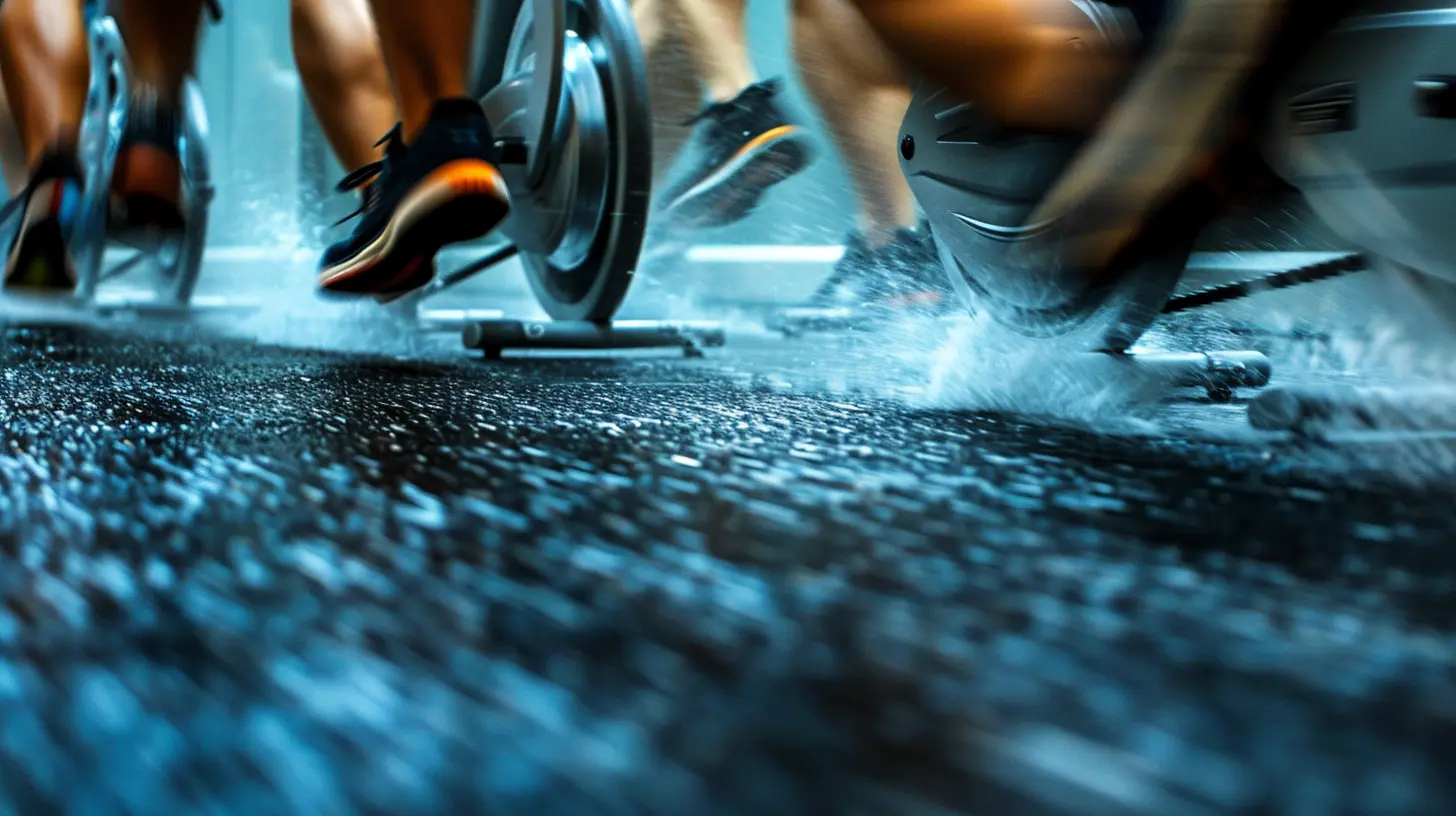HIIT vs. Steady-State Cardio: Which Is Right for You?
22 July 2025
When it comes to cardio workouts, the fitness world is buzzing with two big names—HIIT and steady-state cardio. You’ve probably heard of them. One is fast and furious, the other slow and steady. But which one is right for you? Grab your water bottle, tie those laces tight, and let’s break it all down—no confusing jargon, just real talk from one fitness enthusiast to another.

What’s the Big Deal About Cardiovascular Exercise?
Cardio isn’t just about torching calories—though it’s great for that too. It’s about strengthening your heart, improving stamina, boosting your mood, and keeping your metabolism on its toes. Whether you’re jogging through the park or knocking out sweat-dripping sprints, cardio fuels your body and mind.But not all cardio is created equal…
There are two main roads to take: High-Intensity Interval Training (HIIT) and Steady-State Cardio (SSC). Each route has its pros and cons, and your choice depends on your goals, fitness level, time, and even personality.
Ready? Let's dive into both and see where you might fit.
What is HIIT?
Imagine sprinting like your snacks are on the other side of the track… then taking a breather… and doing it all over again. That’s HIIT in a nutshell: short bursts of intense exercise followed by recovery.How It Works
You push your body hard—think 20 to 60 seconds of intense effort—then recover with low-intensity movement or rest. This cycle is repeated for 15 to 30 minutes.For example:
- 30 seconds of burpees
- 30 seconds of rest
- Repeat for 20 minutes
You can do HIIT with almost anything: running, cycling, jumping rope, rowing, or with bodyweight exercises like squats and lunges.
Benefits of HIIT
- Time Saver: Got 20 minutes? Perfect. HIIT is ideal for busy bees who want max results in minimal time.- Torches Calories: You keep burning calories even after you’ve left the gym. That’s the “afterburn effect” (science calls it EPOC).
- Boosts Metabolism: HIIT revs up your metabolism like a double espresso.
- Improves VO2 Max: You’ll feel less winded during other workouts and daily activities.
- Strength + Cardio Combo: Mix in strength movements and you’re multitasking like a champ.
Downsides of HIIT
- Not Beginner-Friendly: HIIT is intense. If you’re just starting out, it might feel like climbing Everest.- High Injury Risk: Without proper form or rest, you risk injury from going all out.
- Tough on Recovery: Your muscles and nervous system need more time to bounce back.

What is Steady-State Cardio?
Now picture a long walk on the beach or a consistent jog through your neighborhood trail. That’s steady-state cardio—low to moderate intensity exercise kept at a steady pace.How It Works
You maintain the same intensity for the entire duration—usually 30 to 60 minutes or more.Examples include:
- Jogging
- Cycling
- Swimming laps
- Rowing at a steady pace
Your heart rate stays at about 50-70% of your max, which feels challenging but sustainable.
Benefits of Steady-State Cardio
- Great for Beginners: Easy to start and get going—no fancy timers required.- Lower Risk of Injury: Less stress on your joints and muscles.
- Endurance Building: Boosts cardiovascular endurance over time.
- Excellent for Fat-Burning: Especially in longer sessions (40+ minutes).
- Zen Mode Activated: Can be meditative and mentally relaxing.
Downsides of Steady-State Cardio
- Takes More Time: You’ll need 45-60 minutes for the best results.- Plateau Potential: Your body adapts to the same pace over time, making fat loss slower.
- Can Be Boring: Repetitive motion and long durations aren't everyone’s cup of tea… or protein shake.

HIIT vs. Steady-State Cardio: Head-to-Head Comparison
Let’s lay it all out on the track and see how these two compare in key areas:| Category | HIIT | Steady-State Cardio |
|---------------------------|----------------------------------|------------------------------|
| Intensity | High | Low to moderate |
| Time Commitment | 15–30 minutes | 30–60 minutes |
| Calories Burned | High (including afterburn) | Moderate |
| Fat Loss | Effective, short-term | Effective, long-term |
| Fitness Level Needed | Intermediate to advanced | Beginner-friendly |
| Muscle Building | Possible with bodyweight moves | Minimal |
| Stress on Body | High | Low |
| Injury Risk | Higher | Lower |
| Fun Factor | Depends—variety keeps it fresh | Depends—rhythm can be calming|
Which One Should YOU Choose?
Now, this is the million-dollar question!Let’s personalize this a bit. Think about your goals, lifestyle, and what type of workout you actually enjoy (hint: consistency beats perfection every time).
Choose HIIT If You:
- Want fast results in less time- Have a busy schedule
- Are already somewhat fit
- Enjoy variety and challenges
- Love sweating buckets and pushing limits
Choose Steady-State Cardio If You:
- Are new to exercise- Prefer a gentler approach
- Love long runs, walks, or bike rides
- Want to improve endurance gradually
- Use workouts as "me-time" or stress relief
Pro Tip: Why Not Both?
Here’s the magic sauce: combine them!It doesn’t have to be either-or. Mixing HIIT and SSC can give you the best of both worlds. For example, do HIIT 2–3 times per week and steady-state cardio on alternate days. Your body gets variety, your workouts stay fun, and results keep coming.
Sample Weekly Workout Plan (Mix It Up!)
| Day | Workout ||---------------|----------------------------------|
| Monday | HIIT (20 mins – circuits) |
| Tuesday | Steady-State Cardio (45 min walk or jog) |
| Wednesday | Rest or light yoga |
| Thursday | HIIT (Tabata-style session) |
| Friday | Steady-State Cardio (bike or swim) |
| Saturday | Active recovery (hike or brisk walk) |
| Sunday | Rest |
Having a balanced routine keeps your body guessing and your motivation high. Plus, recovery days are just as crucial as your workout days—don’t skip them!
What About Weight Loss?
Everyone asks this—“Which is better for fat loss?”Well… HIIT does burn more calories in less time and might slightly edge ahead in terms of short-term fat loss due to the afterburn effect. But steady-state cardio shines in long-term consistency and sustainability.
If burning fat is your main goal, here’s the truth bomb: It’s more about overall lifestyle—your diet, sleep, and stress levels matter big time. But combining both types of cardio with good nutrition? That’s the golden ticket.
Wrapping It All Up
So, HIIT vs. steady-state cardio—which is right for you?In the end, it’s not about which method is "better" across the board—it’s about what fits your goals, your body, and your life. Do you love the thrill of short, intense workouts? HIIT is your jam. Prefer a leisurely jog with your favorite playlists? Steady-state all the way.
Fitness isn’t a one-size-fits-all. Listen to your body, keep exploring, and most importantly—have fun with it. Because if you enjoy your workouts, you’ll stick with them. And that’s the real win.
So lace up, press play, and move your body—your heart and soul will thank you.
all images in this post were generated using AI tools
Category:
FitnessAuthor:

Umberto Flores
Discussion
rate this article
1 comments
Sloane Jimenez
Great insights! I appreciate the balanced perspective on HIIT and steady-state cardio. It really helps in making informed choices. Thanks!
September 8, 2025 at 11:57 AM

Umberto Flores
Thank you for your kind words! I'm glad you found the insights helpful.


